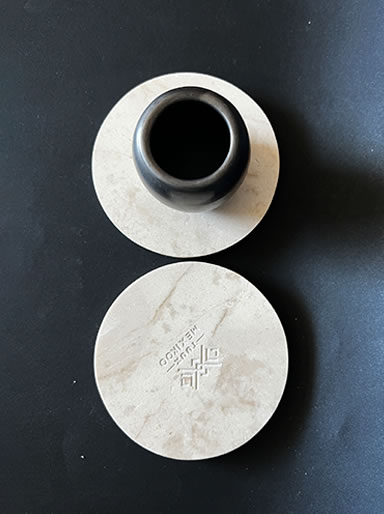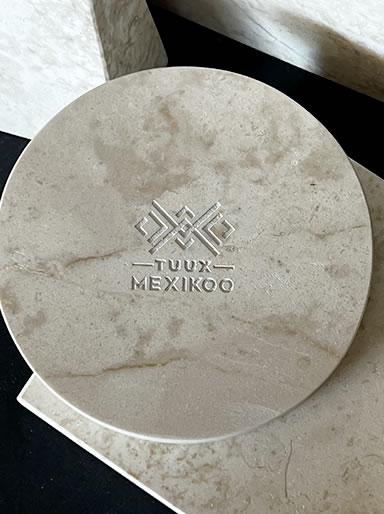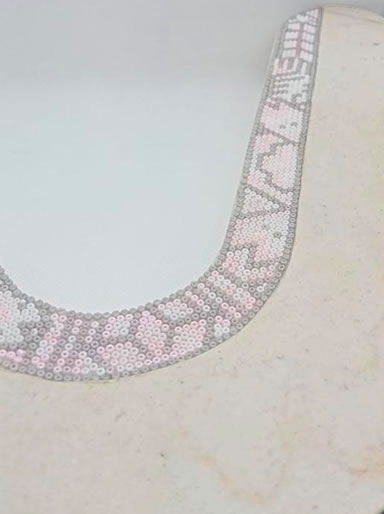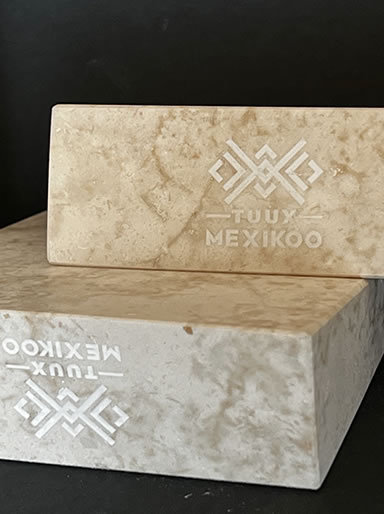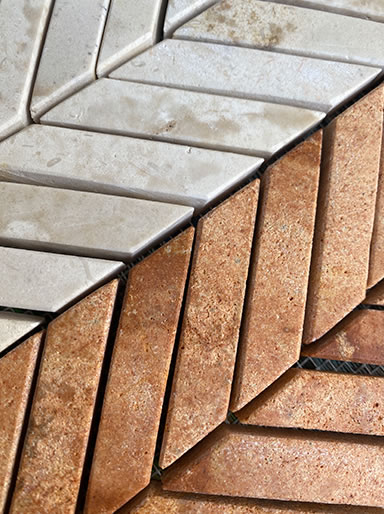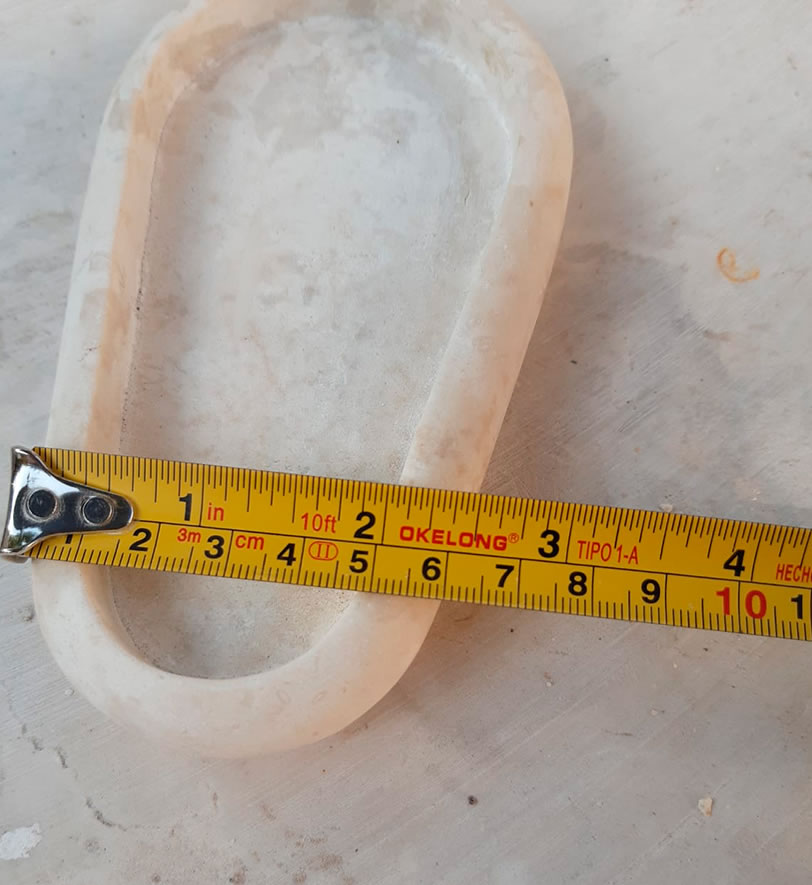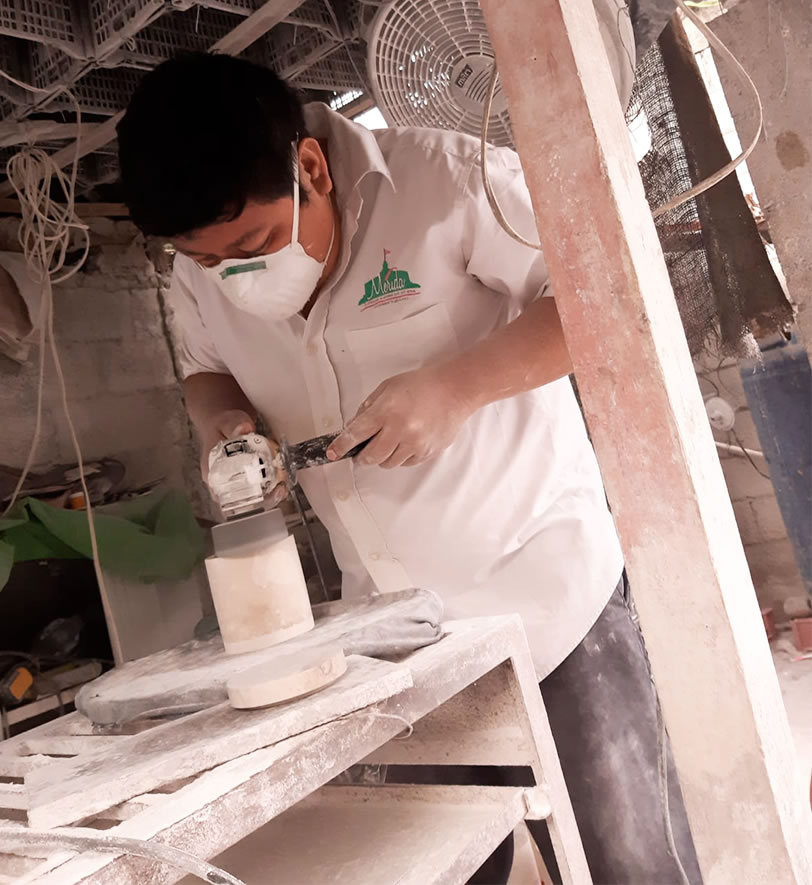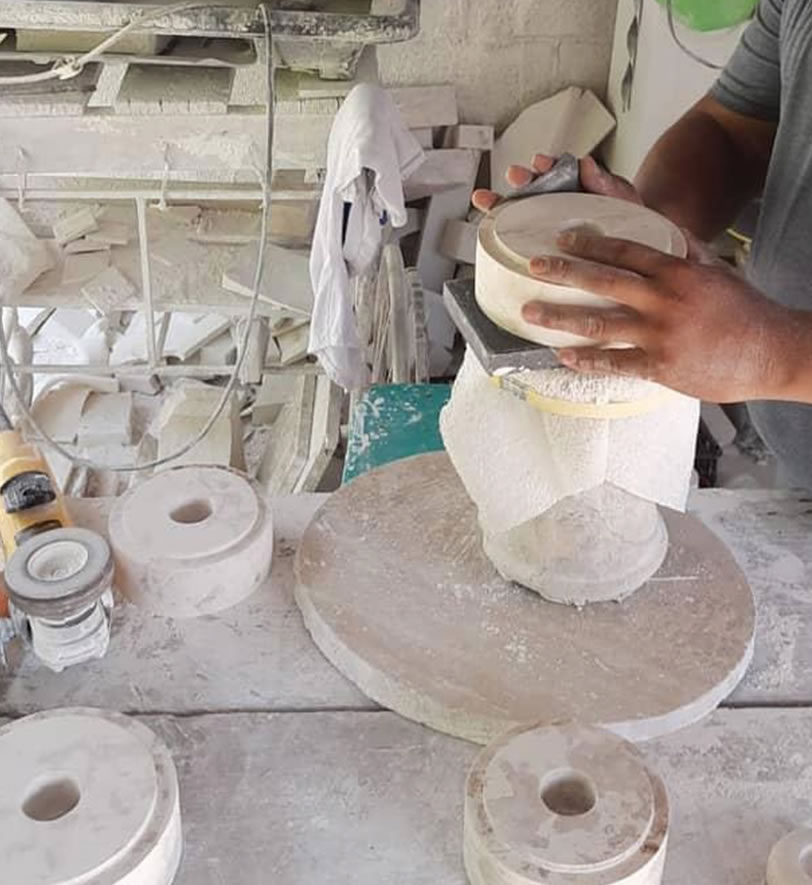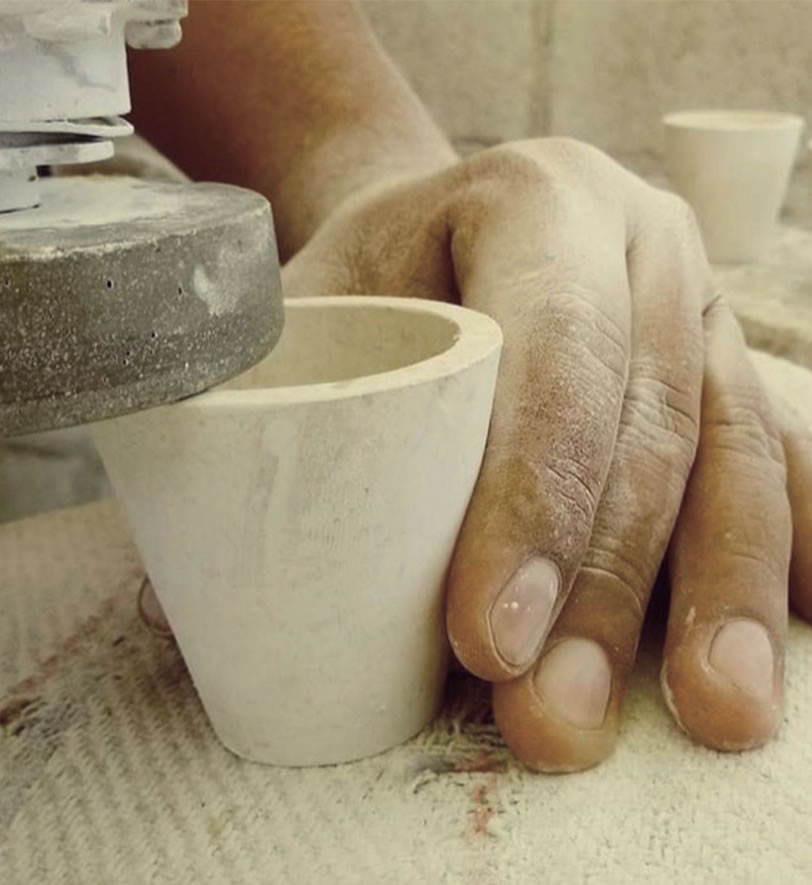History
Mexican stones such as Crema Maya, Ticul, and Conchuela, originating from the Riviera Maya, were used in the construction of pre-Hispanic cities and pyramids. Throughout history, the practice of this technique has changed very little, but the tools used in its execution have evolved thanks to technology.
The work of a stone carver is similar to that of a sculptor, and their tools include chisels, picks, and brushes.
Process
Delineation
Drawing with a pencil to mark guide lines is a common practice in stone carving. The pencil allows the artisan to sketch the design directly onto the stone surface, creating a visual reference for the carving process. The guidelines help ensure accuracy and precision in shaping the stone according to the desired design.
Chiselled
Using the guidelines as a reference, the artisan gradually begins to carve the figure into the stone using a chisel. The chisel is a sharp tool with a flat or pointed edge that allows the artisan to remove material from the stone by striking it with a mallet or hammer. With precise and controlled movements, the artisan carefully follows the pencil lines, gradually shaping the stone and bringing the desired figure to life. This process requires skill, patience, and attention to detail to achieve the desired result.
Forming
Once the pencil lines are in place, the figure is gradually marked with the chisel.
Polish
The piece is finished to give it a smooth and elegant touch. Some pieces are sealed with special lacquers, depending on their final use, such as pieces intended for food use.
This technique can make a material as hard as stone look soft and delicate.

